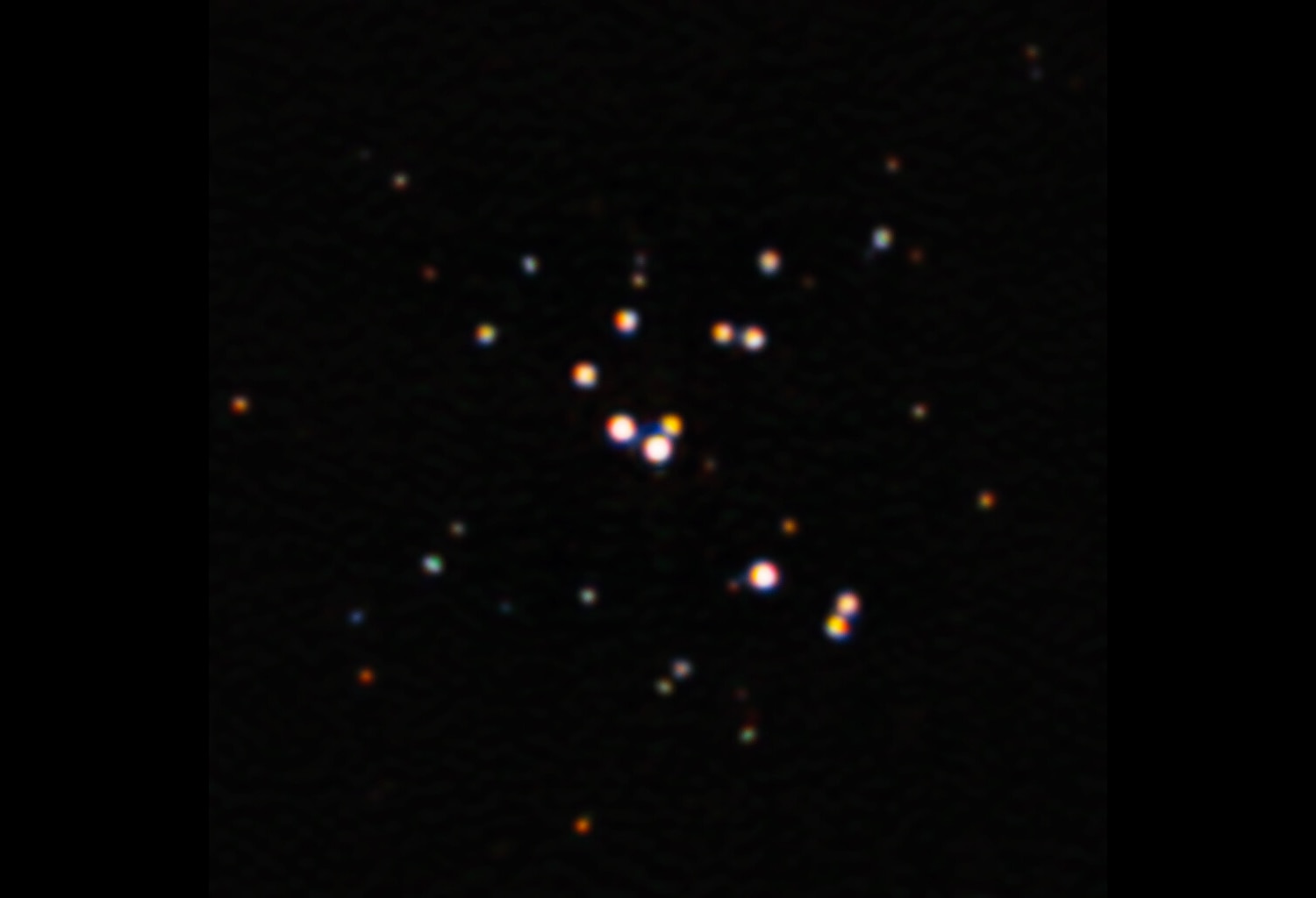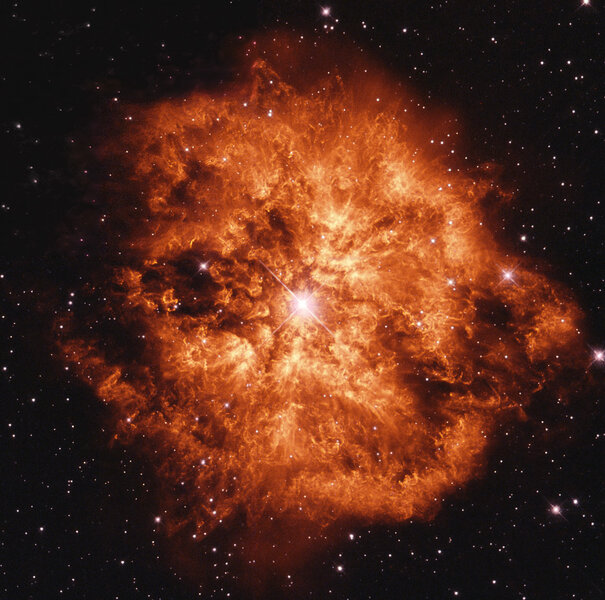Just how massive can stars get? Maybe not *quite* as massive as we thought
But still terrifyingly big.

Massive stars — I mean truly massive, with 20 or more times the Sun’s mass — are terrifyingly powerful.
The energy they produce scales steeply with mass, so at the top end of this range stars can blast out so much light they can be seen in other galaxies with small telescopes, and would cook any planets they have to a crisp. They can light up entire nebulae, and when they explode at the ends of their short, violent lives they can outshine entire galaxies. Galaxies plural.
But how massive can stars get? It’s an important question in astronomy. We have a decent grasp of how stars like the Sun behave, but as you add more mass to them their behavior can get wonky. They can become unstable, pulsating and even undergoing explosions that are just this side of a catastrophic supernova.
Also, when massive stars explode they seed the galaxy around them with heavy elements like iron that they make during their lifetime. Those elements are necessary to make planets, and life. We literally owe our existence to massive stars going supernova.
And theoretically speaking we’d like to know what the upper mass limit is because it helps astronomers nail down how stars are born and how they live out their lives.
Up until recently that limit was thought to be over 300 times the mass of the Sun, which is huge. But now, new observations of the most massive star known show that might be an overreach. The new results imply that mass limit is more like 200 solar masses.
The star is called R136a1. It’s part of a tight cluster of very young stars called NGC 2070, which is in the center of the Tarantula Nebula, a vast and sprawling star-forming gas cloud in a satellite galaxy to the Milky Way called the Large Magellanic Cloud. It’s about 160,000 light years away.
Observing R136a1 at all is hard. The stars in the core of NGC 2070 are very closely packed together, and even with Hubble it’s tough to separate them. And that’s critical; you can’t observe a star and figure out what it’s doing if its light is blended with another nearby star.
To do better, a team of astronomers used the 8.1-meter Gemini South telescope in Chile with a special camera on it called Zorro [link to paper]. What makes it special is that it can do speckle imaging.
The Earth’s atmosphere is a pain for astronomers. It’s constantly in motion, with little packets of air zipping back and forth. Each one of these acts like a lens, bending the incoming light form stars. Over time, even a fraction of a second, the image can move around so much it gets blurred into a circle called, weirdly, the seeing disk. Two or more stars close together in the sky can be blended into a single blob.
One way around that is to take extremely short exposures, freezing out that motion. That’s what Zorro can do, taking images a mere 60 milliseconds long. On Halloween, 2021, the astronomers obtained 40,000 such short exposures using several different filters to select out certain star colors. They then shifted and combined the observations for each filter to negate the atmospheric dance that blurred them.
The bigger the telescope, the better the resolution; that is, the closer two objects can be and you can still separate them. Because Gemini is so big, using speckle imaging can result in observations with as good or better resolution than Hubble, which has a 2.4-meter mirror but doesn’t have to deal with an atmosphere.
In the new images — the highest resolution visible-light observations of the star ever taken — R136a1 is cleanly seen, as well as dozens of stars around it. This allowed the astronomers to get better measurements of the color of R136a1 than ever before.
That part’s critical. The colors of a star can be compared to the expected colors given the star’s characteristics: Its mass, temperature, size, elemental abundance, age, and more.
When all is said and done, the new measurements yield a mass for the monster star of 196 times the Sun’s mass, with an uncertainty of +34 and -27, so it could reasonably be between 169 and 230 times the Sun’s mass. That’s a staggeringly high mass, but still significantly lower than a previous estimate of nearly 300 solar masses at the upper end.
The astronomers who did this work caution that they pushed speckle imaging right up to the edge of what it can do, so they don’t want to draw a line in the sand about the mass. It’s still uncertain. But it does suggest that, since R136a1 is the most massive star known, the upper limit for how massive stars can be may be lower than thought.
Incidentally, that’s how massive the star is now. It’s over a million years old and has no doubt lost a lot of mass over that time in a fierce wind; stars like this, called Wolf-Rayet stars, are known to blow away vast amounts of material. So it was once much more massive. Just how massive isn’t well known.
As an aside, the luminosity they get for the star is 4.6 million times that of the Sun. If you replaced the Sun with R136a1 it would appear the size of your outstretched fist, but would be so bright your fist would also catch on fire and the Earth would broil. So, yeah. Good thing it’s a couple of galaxies away from us.
It also changes how we think some stars explode. Extremely massive stars can undergo a theoretical type of explosion called a pair instability supernova, which can result in an ultraluminous explosion. However, if the upper mass limit for stars is 200 and not 300 solar masses, that reduces the number of such supernovae we may see. Also, the amount of heavy elements blasted out by extremely massive stars depends strongly on the mass, so this new result could change how we think all those critical elements came to be.
This isn’t some esoteric result; it literally changes how we see the Universe and our origins in it.
So how can this new result be confirmed or refuted? More resolution, and that means bigger telescopes, at least something in the 30-meter class range. Those don’t exist yet, but plans exist to build them. That’ll be a while, though, so for now astronomers will have to figure out other ways to hone in on the biggest stellar beasts the cosmos can cook up.





























